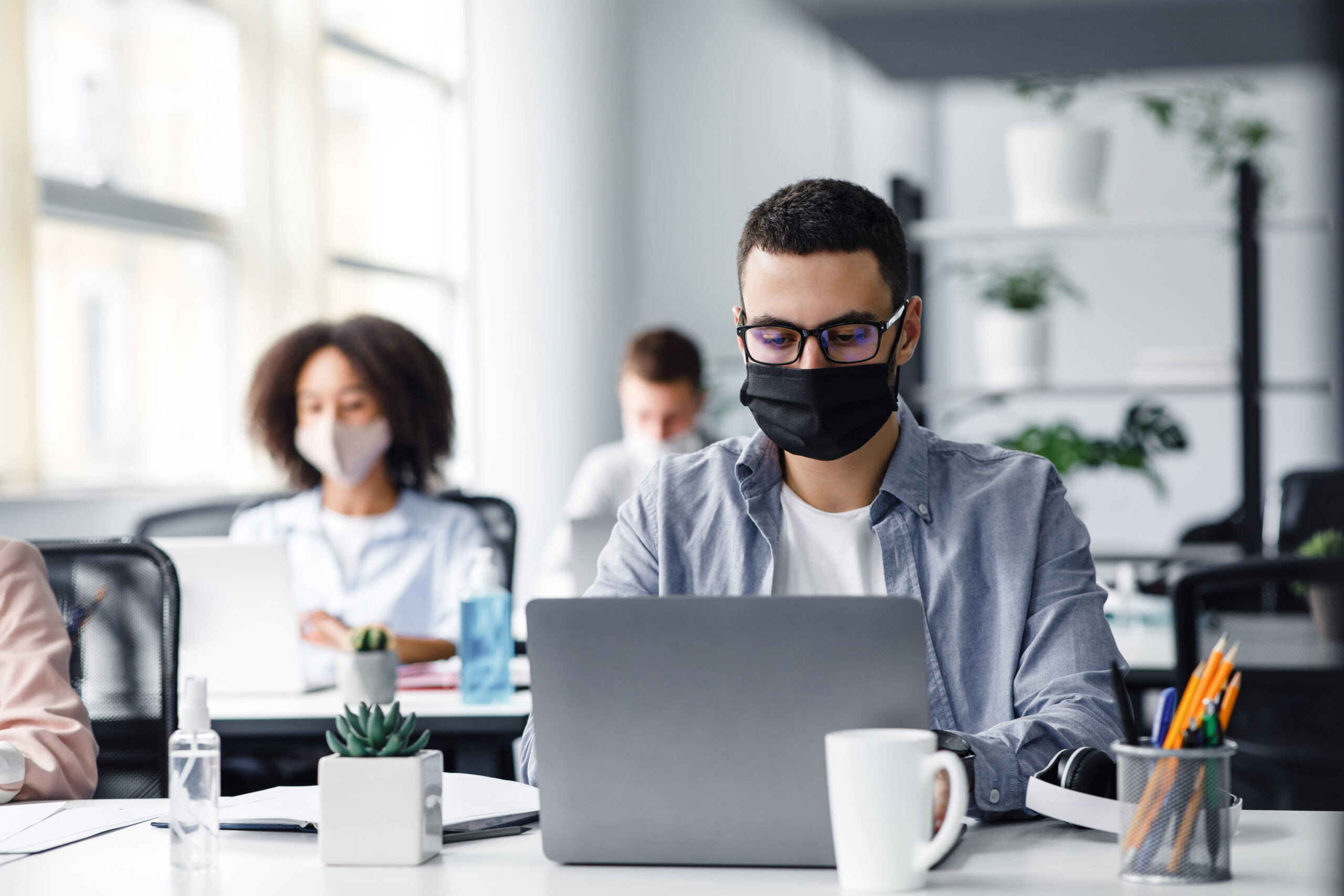How to Reopen Professional Offices with COVID-19 Safety Measures in Mind

While a handful of states are reversing their reopening plans as COVID-19 cases jump again, in many regions businesses operating in professional offices have returned to work in some way, shape or form. For businesses that have employees coming back to their pre-COVID desks, there are many important safety measures that they should be implementing to reduce workers’ compensation-related exposures.
One of the key risks that companies have to keep in mind during this time, however, has less to do with people’s physical safety and more to do with their mental well-being.
“The biggest risk factor … is the emotional component,” said Jeff Corder, vice president of loss control at AmTrust North America. “There’s tons of information about trying to prevent the spread of COVID, but trying to keep your employees engaged and motivated, and feeling like they’re part of a team and not just sitting in their basement or their office at home … that is the biggest challenge right now.”
In this vein, AmTrust’s “Guide to Getting Back to Business” highlights employee burnout as one of the main concerns that companies need to consider. After all, there’s a lot to worry about these days, from business closures to all of the unknowns surrounding the virus and its ongoing spread. As a result, it is crucial that companies “understand the signs of stress, anxiety and employee burnout and manage these issues,” stated the report, adding, “If one employee is feeling burnout, it can affect an entire team, the customers, and ultimately, the business itself.” To mitigate this risk, AmTrust recommends that employers encourage their staff to get enough sleep, focus on proper nutrition, take breaks, and find positive support and coping strategies, among other tips to stay sane during this time.
Other stressors that employees might be experiencing include having to perform responsibilities they haven’t done for a long time or have never done, because of potential cutbacks in staff. Companies working from offices need to think through how to train and retrain individuals appropriately to maintain safety standards and do so virtually, given social distancing measures. AmTrust is providing a wealth of virtual training resources during this time, with follow-up testing for employees to ensure they understand the material.
Even in an office setting, this training is important. With fewer people in the building, individuals might not know or remember how to use a copier or deal with other technical issues they could run into. While the risk of getting injured in this type of scenario is greater in industrial settings, in an office, “If you don’t know how to operate a copier, you could open yourselves up to get injured,” said Corder.
Other risk management safety strategies that offices can implement could involve rearranging seating arrangements to account for social distancing and mapping out pathways through the office space itself so that employees are moving in one direction and limiting their contact with one another.
For example, noted Corder, “A conference room might normally seat 12, but we’re going to limit that to four, or with elevators, limiting the number of individuals [using it] to three or four,” which means staggering the arrival and exit of employees.
AmTrust’s guide on returning to work also highlights that property managers and company leaders can consider updating office buildings by installing new technology to provide access to rooms without the need to touch a handle or push a button. Furthermore, hand-washing practices should become a regular part of employees’ routine, with signage around the office reminding employees about its importance. Hand sanitizer stands and disinfectant wipes can also be introduced, while HVAC systems could be updated to promote better air quality.
Additional cleanings may likewise become part of the office setting. “One of the things that we’re doing as a company and that we’re recommending to our insureds is giving every employee a piece of paper, where one side is green and the other side is red,” explained Corder. “When you leave at night, if that workspace was worked at during the day … you turn the red side of the paper up, so that when the cleaning crew comes in, they know that’s where they’ve got to deep clean.”
All of these recommendations and many more can be found on AmTrust’s website. The company also offers a call-in center that insureds can use to have their COVID questions about workplaces answered. “We have built an entire section within loss control just for COVID, and we have COVID videos built in with training programs that insureds can use free of charge,” added Corder.
